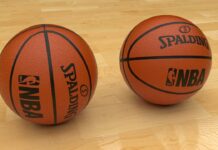
Shaver’s fall colors are abundant right now. The crisp fall temperatures and colors are symbolic of Shaver’s change in season. Welcome fall, my favorite time of the year.
While it may be beautiful up here, the fishing has really declined. My latest trip on the last Saturday of September, I had to take care of some health issues. But, my good friend and fellow Shaver guide, Todd Wittwer, continued into October. You can see in the photo with this report, he found the, “glory hole” for kokanee and picked up this nice stringer of near spawning kokes.
Todd, friend Tom Oliveira and I know that the end of the kokanee season provides what can be a great experience, but you must find that “glory hole.” We have good ideas where they are, but normally they are stacked in one or two of those ideal spawning locations. In this case, Todd went back to one of our spots in Bikini Cove. Todd calls it Rock Haven Cove, but from the Point to SR 168 has always been Bikini Cove to me.
Anyways, Todd took a couple from the Bay Area out that morning. He slipped into the cove and put some pink tackle down to 19 feet. Within two hours they had their fish. All near-spawning kokanee, no trout. This is a great example of the traits of spawning kokanee. They normally school together in the hundreds.
During this time of the year, it is important to move spots fairly quickly until you can find the “glory hole.” Surprisingly, the kokes Todd’s clients caught were not on the bottom where most spawners have gone. Instead, they were up in the top 20 feet of water. My guess is that you would probably find them there in Bikini Cove today, when the Roundup comes out. They may not be good to eat, as spawner’s meat turns soft and basically falls apart in preparation for cooking. But, some may still be edible.
The trout bite surprisingly is not there, which is strange for this time of the year as many of the lake’s trout head toward Stevenson Bay and it’s creeks and school. No, they do not spawn, but I think Mother Nature makes them think they are going to.
Now, that brings me to the next season. As I have said before, some of this year’s kokanee will spawn and produce up to approximately 20 percent of the normal kokanee population. Because the California Department of Fish and Wildlife (CDFW) did not plant the normal 40 to 50 thousand kokanee fingerling two years ago, we most likely will not have a kokanee season in 2020. That puts a big responsibility on the CDFW to make sure that there will be an ample plant of trout in 2020. Otherwise, it could be a very sad year for all of us fishermen.
So, what does this mean? Well, for starters you will need to go back to the times before we had kokanee.
Fishing for trout, I think, is a different approach from fishing for kokanee. It can be an easy day on the lake not having to work the down riggers, simply putting your favorite lure back with a piece of nightcrawler on it. I liked those days, but I will definitely miss the kokanee.
For next year, here is what I will have out on my five poles. On the side poles, I will have a Trout Buster, tipped with crawler, behind a weighted Mountain Flasher. On the down riggers, I will have either Koke Busters or Trout Busters behind a Mountain Dodger in orange or purple and silver. The side poles will be out in the spring at 70 feet back or about 12 feet deep in water. The down riggers may be 15 feet down.
As the year progresses into the summer, I will probably be back 100 feet or about 20 feet down on the side poles, and 15 to 25 feet deep on the down riggers. I have found that the trout in Shaver are happiest at 20 feet deep.
Of course, there are exceptions. Trophy trout are found in mostly 20 feet deep water, but last year we had some success at 30 to 40 feet. We know that trout like 55 to 65 degree water, with 57 degrees being their favorite feeding temperature. The kokanee like a colder 50 to 60 degrees, with 52 degrees being their best feeding temperature. We will have some mature kokanee in the water, so you need to take that into account and perhaps lower one of your down riggers for the few kokanee that will be out there.
Todd, Tom and I caught and released about 25 accumulative second year kokanees last year, so we know that some spawned. I don’t expect to see a lot of “kokanee” boats out there next year, as most kokanee fishermen do not like trout fishing. But, what are they going to do next year, swallow it and trout fish!
My next report will feature our 50 thousand golden and brown fingerlings that were planted earlier this year. You’re going to be surprised at what the future presents. The record golden trout in a lake was about 11 pounds. Got your attention? See you in the next issue.
If you are interested in a Christmas present of a fishing trip for a friend or loved one in 2020, purchase a nice gift certificate from Debby at Shaver Lake Sports, (559) 841-2740.









